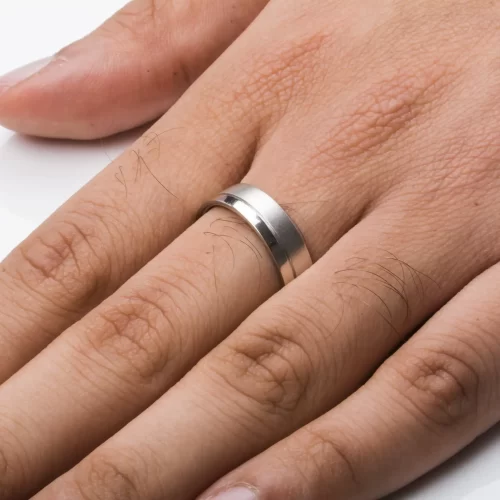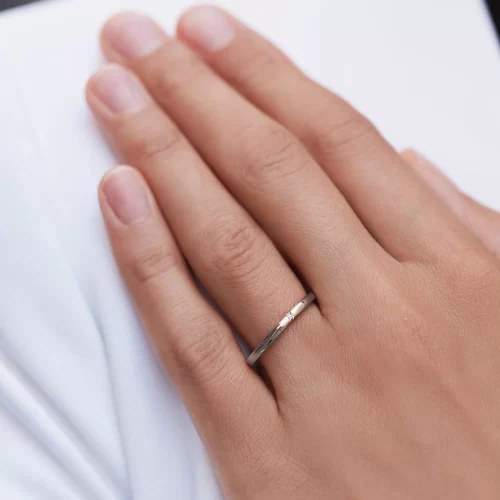Platinum, White Gold Or Palladium
When it comes to selecting a metal for fine jewellery, there are several options to choose from, including platinum, white gold, and palladium. Each of these metals has its own unique characteristics, making them suitable for different types of jewellery and personal preferences.
In this article, we’ll take a closer look at the differences between platinum, white gold, and palladium to help you make an informed decision when choosing a metal for your jewellery.

Composition
One of the primary differences between platinum, white gold, and palladium is their composition. Platinum is a naturally white metal, while white gold and palladium are alloys made by mixing other metals with gold and palladium, respectively.
Platinum is a dense and heavy metal, which gives it a luxurious feel and durability. White gold is typically made by combining gold with palladium, nickel, or zinc, which gives it a white colour. Palladium is usually combined with other metals like copper, silver, or nickel to make an alloy that has a bright white colour.
Durability
Another important factor to consider when choosing a metal for fine jewellery is its durability. Platinum is the most durable of the three metals, as it is very hard and resistant to scratches and wear. It’s also hypoallergenic, making it a great choice for those with sensitive skin.
White gold is also durable, but it can be prone to scratching and may require occasional re-plating to maintain its lustre. Additionally, white gold may contain nickel, which can cause allergic reactions in some people.
Palladium is less durable than platinum or white gold, but it’s still a good option for everyday wear. It’s also hypoallergenic and won’t cause skin irritation.

Cost
The cost of jewellery made with platinum, white gold, or palladium will vary depending on the market price of the metal at the time of purchase. However, there are some general price differences to be aware of.
Platinum is the most expensive of the three metals, due to its rarity and density. It’s also more difficult to work with, which can increase the cost of manufacturing jewellery.
White gold is less expensive than platinum but still more costly than palladium. The cost of the white gold will depend on the percentage of gold in the alloy and the other metals used to create the white colour.
Palladium is the most affordable of the three metals. It’s less expensive than both platinum and white gold, making it a great choice for those who want the look of white gold or platinum without the high cost.
Appearance
While platinum, white gold, and palladium all have a similar silver-white appearance, there are subtle differences in their colour and lustre.
Platinum has a bright, silvery-white colour with a subtle sheen. It’s also very reflective, which gives it a bright shine. White gold has a slightly yellowish tint, which is why it’s often plated with rhodium to enhance its whiteness. White gold can have a higher shine than platinum, which some people prefer.
Palladium is a bright white metal, but it has a more matte finish than platinum or white gold. It doesn’t have as much shine or reflectivity as platinum or white gold, but it still has a modern and elegant look.

Which Metal is Right for You?
Now that we’ve explored the differences between platinum, white gold, and palladium, you may be wondering which metal is right for your jewellery.
Platinum is an excellent choice for those who want the most durable and hypoallergenic metal for their jewellery. It’s also a great choice for those who prefer a bright, reflective shine.
White gold is a good option for those who want the look of platinum without the high cost. However, if you have a nickel allergy, be sure to choose a white gold alloy that doesn’t contain nickel.
Palladium is a good choice for those who want an affordable alternative to platinum or white gold. It’s also a hypoallergenic metal that won’t cause skin irritation. If you prefer a more understated, matte finish for your jewellery, palladium may be the right choice for you.
Ultimately, the choice between platinum, white gold, and palladium will depend on your personal preferences, budget, and the intended use of the jewellery. Consider the factors of composition, durability, cost, and appearance when making your decision.
It’s also important to consider the design of your jewellery. Some designs may look better in platinum or white gold, while others may be better suited for palladium. Additionally, the gemstones you choose for your jewellery may also affect which metal is best. For example, diamonds may look best in platinum or white gold, while coloured gemstones may look better in palladium.
When choosing a metal for your jewellery, it’s important to work with a reputable jeweller who can guide you through the decision-making process. They can help you understand the differences between metals and recommend the best option for your needs.
Wrapping Up
In conclusion, platinum, white gold, and palladium are all excellent choices for fine jewellery. Each metal has its own unique characteristics that make it suitable for different types of jewellery and personal preferences. Consider the factors of composition, durability, cost, and appearance when making your decision, and work with a reputable jeweller to ensure that you make the best choice for your needs.
